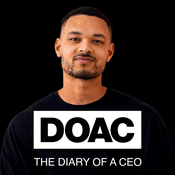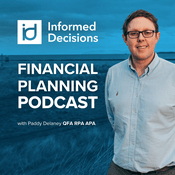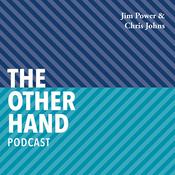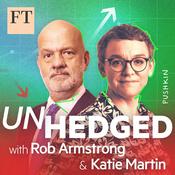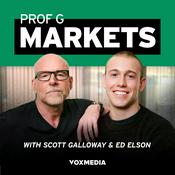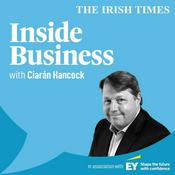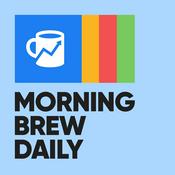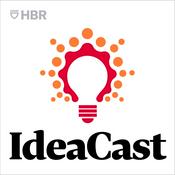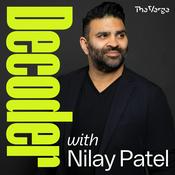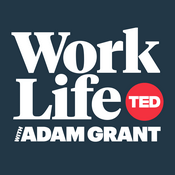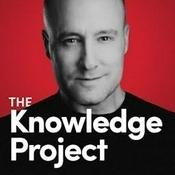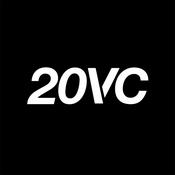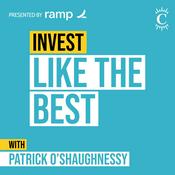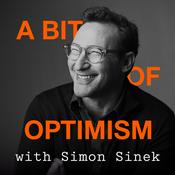Available Episodes
5 of 588
- AI According to an 8-Year-Old — Part 1Mallory sits down with one of the youngest AI creators to grace the show—eight-year-old Cora Budd, a third grader at Division Street Elementary. Together, they explore how Gen Alpha is already using AI not just for learning, but for bold, imaginative storytelling. From building entire fictional universes to designing merch and comics, Cora shows how her generation is blending creativity and technology in remarkable ways. This episode offers a glimpse into the future of AI in education, through the lens of a curious, confident third grader.Related Links:Parent Survey Finds Half of Gen Alpha Students Using AIGen AI and Gen Alpha: The impacts of growing up in an innovation cycleChildren’s Mental Models of Generative Visual and Text Based AI Models - - - -Connect With Our Host:Mallory Willsea https://www.linkedin.com/in/mallorywillsea/https://twitter.com/mallorywillseaAbout The Enrollify Podcast Network:The Higher Ed Pulse is a part of the Enrollify Podcast Network. If you like this podcast, chances are you’ll like other Enrollify shows too!Enrollify is made possible by Element451 — The AI Workforce Platform for Higher Ed. Learn more at element451.com. Hosted by Simplecast, an AdsWizz company. See pcm.adswizz.com for information about our collection and use of personal data for advertising.--------16:30
- Enrollify 2025 Hall of Fame: Carrie Pitts-DensmoreWelcome back to the Enrollify Hall of Fame series, where we spotlight some of the most compelling voices and visionary thinkers in higher education marketing and enrollment. Today, we're featuring Carrie Pitts-Densmore, Vice President of Enrollment and Marketing at Johnston Community College. Carrie’s fearless leadership style, her candor around AI and culture shifts, and her relentless focus on student-centered strategy make her a standout across multiple shows on the Enrollify Network. If you're grappling with how to implement tech, lead with equity, or build empowered teams, this Hall of Fame episode is a masterclass you won't want to miss. - - - -Connect With Our Host:Mallory Willsea https://www.linkedin.com/in/mallorywillsea/https://twitter.com/mallorywillseaAbout The Enrollify Podcast Network:The Higher Ed Pulse is a part of the Enrollify Podcast Network. If you like this podcast, chances are you’ll like other Enrollify shows too!Enrollify is made possible by Element451 — The AI Workforce Platform for Higher Ed. Learn more at element451.com. Hosted by Simplecast, an AdsWizz company. See pcm.adswizz.com for information about our collection and use of personal data for advertising.--------10:31
- Pulse Check: Building the Modern Campus - A Higher-Ed Project Management Playbook — Pt. 1Jake Tolman, CEO of MainForm Consulting, kicks off a four-part pulse check series from Enrollify with guest John Connolly of PMO Delivery Partners. Together, they explore how the traditional Project Management Office (PMO) in higher education is evolving amidst digital transformation and the rise of AI. With deep insights on project governance, organizational learning, and AI's growing role in project management, this episode sets the stage for how institutions can future-proof their project work and governance models.mainformconsulting.com - - - -Connect With Our Host:Mallory Willsea https://www.linkedin.com/in/mallorywillsea/https://twitter.com/mallorywillseaAbout The Enrollify Podcast Network:The Higher Ed Pulse is a part of the Enrollify Podcast Network. If you like this podcast, chances are you’ll like other Enrollify shows too!Enrollify is made possible by Element451 — The AI Workforce Platform for Higher Ed. Learn more at element451.com. Hosted by Simplecast, an AdsWizz company. See pcm.adswizz.com for information about our collection and use of personal data for advertising.--------48:14
- Enrollify 2025 Hall of Fame: Faton SopaWelcome to Enrollify’s 2026 Hall of Fame series, where we resurface the most transformative conversations ever featured across the Enrollify Podcast Network. We’re kicking things off with none other than Faton Sopa, Co-Founder and CEO of Manaferra, whose groundbreaking insights have reshaped how enrollment marketers think about the college decision journey. In this highlight reel episode, pulled from his appearances on The Application with Allison Turcio, AI for You, Higher Ed Pulse, and Higher Ed Geek, Faton shares the game-changing role Reddit, TikTok, and AI now play in how students search, validate, and choose a college. - - - -Connect With Our Host:Mallory Willsea https://www.linkedin.com/in/mallorywillsea/https://twitter.com/mallorywillseaAbout The Enrollify Podcast Network:The Higher Ed Pulse is a part of the Enrollify Podcast Network. If you like this podcast, chances are you’ll like other Enrollify shows too!Enrollify is made possible by Element451 — The AI Workforce Platform for Higher Ed. Learn more at element451.com. Hosted by Simplecast, an AdsWizz company. See pcm.adswizz.com for information about our collection and use of personal data for advertising.--------19:50
- The Enrollify Clubhouse: AMA’s Spiciest PanelMallory Willsea brings the Enrollify panel back together for a no-holds-barred reunion following their viral AMA session. Featuring Enrollify creator trio Jaime Hunt, Safaniya Stevenson, and Carrie Phillips, this episode revisits the spicy, unfiltered energy that turned heads at the 2025 AMA Symposium. From roasting overused marketing jargon to unpacking the real implications of AI hallucinations in fundraising campaigns, this conversation offers a pulse check on where higher ed marketing stands—and where it's headed. - - - -Connect With Our Host:Mallory Willsea https://www.linkedin.com/in/mallorywillsea/https://twitter.com/mallorywillseaAbout The Enrollify Podcast Network:The Higher Ed Pulse is a part of the Enrollify Podcast Network. If you like this podcast, chances are you’ll like other Enrollify shows too!Enrollify is made possible by Element451 — The AI Workforce Platform for Higher Ed. Learn more at element451.com. Hosted by Simplecast, an AdsWizz company. See pcm.adswizz.com for information about our collection and use of personal data for advertising.--------35:12
More Business podcasts
Trending Business podcasts
About Higher Ed Pulse
Higher Ed Pulse is your weekly no-fluff guide to AI in higher ed. Higher ed leaders are expected to master AI overnight. But let’s be real — no one has time to sift through every headline, hot take, or research report.
That’s why every Monday, we break down what actually matters — fast, clear, and to the point.
Want to sound like the smartest person in the room? You’re in the right place.
Higher Ed Pulse is hosted by Mallory Willsea and is a proud member of the Enrollify Podcast Network.
Podcast websiteListen to Higher Ed Pulse, The Diary Of A CEO with Steven Bartlett and many other podcasts from around the world with the radio.net app
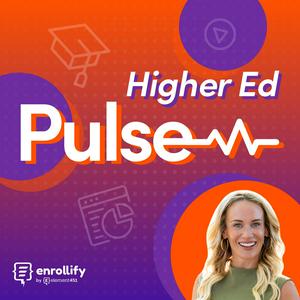
Get the free radio.net app
- Stations and podcasts to bookmark
- Stream via Wi-Fi or Bluetooth
- Supports Carplay & Android Auto
- Many other app features
Get the free radio.net app
- Stations and podcasts to bookmark
- Stream via Wi-Fi or Bluetooth
- Supports Carplay & Android Auto
- Many other app features


Higher Ed Pulse
Scan code,
download the app,
start listening.
download the app,
start listening.
